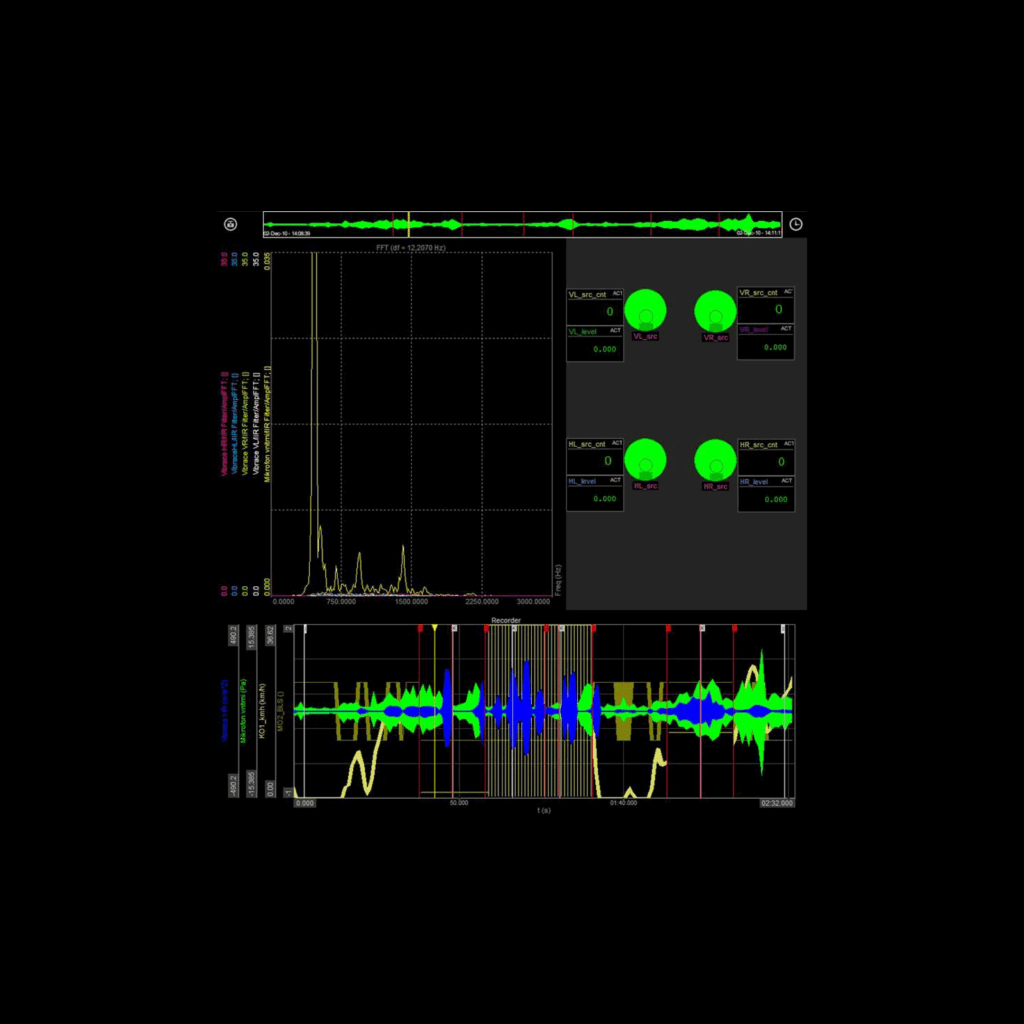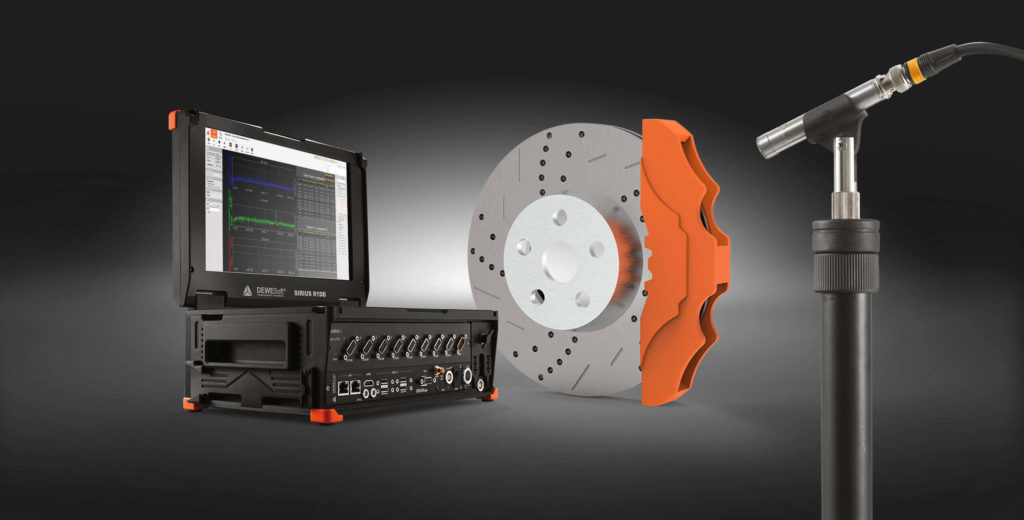This Brake Noise Testing in Vehicles Application Note comes from our friends at Dewesoft.
Dewesoft Brake Noise (Squeal) testing solution is ideal for detecting and tracking noise caused by mechanical vibration in various braking systems based on the VDA 303 guideline algorithm.
The brake squeal math detects and tracks brake noise and squeals events from microphone and accelerometer measurements. The capacity to support an unlimited number of microphones and accelerometers make the plugin very flexible. Any number of arbitrary channels such as temperature, RPM, brake pressure, etc. can be added, and statistics calculated.
Main Features of the Brake Noise Testing System
- VDA 303: Software is developed according to VDA 303 guideline.
- EASY SENSOR PAIR DEFINITION: Detects squeal events from pairs of microphone and accelerometer measurements. Pairs are generated automatically from specified accelerometer and microphone channels.
- AUTOMATIC CALCULATION: Squeals are determined from amplitudes of sound and mechanical vibration. Fourier transformation settings are integrated. Only direct time-domain measurements are needed to detect squeal events.
- FLEXIBLE CONFIGURATION: The number of microphone and accelerometer channels is not limited by the software.
- SQUEAL TRACKING: Each detected squeal is tracked. During the squeal event, statistics on squeal parameters and other Dewesoft X channels (temperatures, RPMs, vehicle speed…) can be calculated.

Brake Noise Detection
The detection of brake noise is based on the comparison of sound and the mechanical vibration amplitude spectrum. The only inputs needed to detect brake noise events are sound and vibration measurements. Amplitude spectrum calculation with a fast Fourier transform (FFT) algorithm is integrated into the software plugin. During the measurement, the plugin can detect and track multiple brake noise events in multiple sound-vibration detection pairs simultaneously, while statistical parameters of the noise event, or of any scalar Dewesoft X channel, can be calculated during an actual brake noise event.
Therefore, Brake squeal is flexible regarding hardware configurations. With an automatic pairing of defined sound and vibration inputs in detection pairs. Hence, the configuration workload is significantly reduced for large measurement setups. The number of brake systems measured and analysed is only limited by the available computer resources. As with Dewesoft X math modules, Brake squeal can also be used in analysis mode to recalculate the data and correct initial setup mistakes.

Input Channel Configuration
Therefore, Dewesoft brake noise solution offers a very flexible and simple channel configuration:
- Inputs and statistics are defined in channel groups
- Each microphone or accelerometer channel will generate an FFT output
- Statistics are output for each microphone-accelerometer pair
- Also global microphones are paired with all accelerometers in local groups
- Plus local microphones are paired only with accelerometers in the local group
- For that reason, global channel statistics are calculated on all squeal pairs, local only on local pairs
- The number of local groups is unlimited

Brake Noise Analysis Results
In conclusion, results of plugin calculations are written in the outputs. There are three different types of outputs:
- Firstly, Amplitude spectrum: Result of the amplitude spectrum calculation of each microphone and accelerometer is written in an asynchronous array channel.
- Secondly, Statistic outputs: The statistic calculations on each microphone-accelerometer detection pair have their own outputs. Results of statistics calculations are noted for each noise event when it finished. Statistic results are always outputs in an asynchronous scalar channel.
- Thirdly, tracking status: One tracking status only can be output in the plugin. The state of the tracking algorithm is output in accordance with Tracking status.
For more information on Brake Noise Testing Analysis, contact us.
